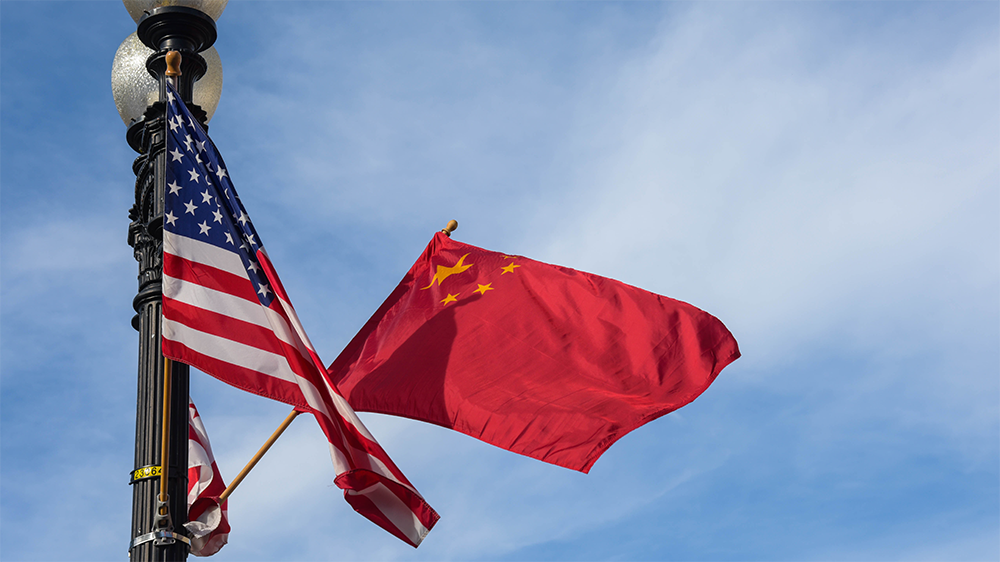Art of phase one deal is in making it work


China and the United States signed the phase one trade deal on Jan 15 after reaching a consensus on nine areas including intellectual property rights protection, technology transfer, agricultural and energy products, financial services, exchange rate, trade balance, and bilateral evaluation and dispute settlement arrangement. Yet the truce did not come easy, as it took the two sides 18 months and back-and-forth negotiations to agree a deal.
Given the two countries' interests, in particular China's capabilities, the agreement will promote cooperation and mutual benefit.
The agreement on the IPR issue will serve the interest of both countries, as the deal includes extending patent to subjects such as trade secrets and drugs, and cracking down on piracy and counterfeits on e-commerce platforms. And stricter IPR protection will encourage more foreign high-tech enterprises to invest in China, creating an innovation-friendly atmosphere and boosting innovation in the country.
The agreement, by being held on an equal footing and accepted by both sides, is conducive to bringing China-US economic and trade relations back to the development track and injecting confidence into the world economy, which has been facing downward pressure for sometime now.
But only if both sides fulfill their respective responsibilities can the deal yield the desired results. For instance, both Chinese and US companies should strictly follow market principles on technology transfer, and neither government must allow individuals or companies to distort competition or violate IPR rules. Also, in case a company enters into a joint venture with another company, neither can force the other to transfer technology or assume that the joint venture automatically gives it administrative license or market access.
The deal also demands transparency and equity in administration and supervision to keep confidential technical information from being undermined by the other side. As such, Chinese enterprises venturing into the US market can expect to get fairer treatment.
The agreement on agricultural products, too, reflects equity. China agreed to purchase about $40 billion worth of US agricultural products a year for two years, raising Chinese farmers' concern that the deal would have a negative impact on their livelihood. But the fact that the US, in return, has agreed to import Chinese poultry and fruits including pears and jujubes, and previously recognized China's regulatory system on catfish should ease the farm sector's concerns, as farmers on both sides will get wider access to each other's markets.
In fact, as the total grain imports of 20 million tons a year will account for just 3.4 percent of China's annual consumption, they won't have much impact on the domestic agricultural market and production. And since bilateral trade is market-oriented, the final sale of US farm products in China would depend on their safety and quality rather than on Beijing's commitment.
Some people are also worried about the consequences of China further opening-up its financial market, saying it could undermine the country's financial security.
But since the phase one deal says the two sides should provide each other with fair, effective, and nondiscriminatory market access for banking, securities, insurance and electronic payment, the opening up of the financial market is expected to facilitate deeper cooperation. Also, despite further opening up the financial market, China will not ease supervision.
It is indeed heartening to see the two sides agreeing to use multilateral systems and rules to determine currency manipulation, one of the main causes of the Sino-US trade dispute, because it will restrain the US from arbitrarily accusing any country, including China, of being a currency manipulator.
Besides, mutual respect for each other's monetary policy will help the two sides to resolve their differences based on international monetary system and financial market rules.
The deal also eases worries that the US would lead China into an agreement similar to the Plaza Accord-an accord signed by the US, France, Germany, Britain and Japan in 1985 to depreciate the dollar in relation to the Japanese yen and the German Deutsche mark by intervening in currency markets.
Based on 2017 figures, China has committed to import an additional $200 billion worth of US goods in the next two years, which will help satisfy Chinese consumers' increasing demand for quality and affordable goods and services. And although the additional imports may intensify competition among domestic companies in the short term, they will help make high-end industries' operations more efficient and expedite their upgrading.
Besides, additional imports by China could prompt the US to remove some Chinese companies from the "Entity List". As for the bilateral evaluation and dispute resolution arrangement, it is an innovative way of settling trade disputes, different from the World Trade Organization's dispute settlement mechanism.
The agreement also changes the US' self-proclaimed role as a global judge. According to the basic rights guaranteed under the WTO framework, the deal grants the two parties equal rights to resume talks on trade, especially on the US' restrictions on export of high-tech products to China. It is hoped therefore that the deal will empower China to also start talks with the US on nondiscriminatory treatment.
By agreeing to meet each other halfway for win-win cooperation, the two sides have cleared the path for the phase two negotiations and put Sino-US trade ties back on the right track. But since signing of the phase one deal solves just some of the disputes, it is critical to hold a constructive attitude and prepare to meet the challenges until the phase two deal is finalized.
The author is a researcher at the Institute of American Studies, Chinese Academy of Social Sciences. The views don't necessarily represent those of China Daily.
Today's Top News
- Xi: Crucial role for new PLA force
- Opening of new flight routes benefits both sides of Taiwan Strait
- US betrays its conscience by vetoing Palestine's UN entry
- China's growth offers opportunities to Europe
- FM urges US to drop sense of superiority
- IT, high-tech makers power industry in Q1






























